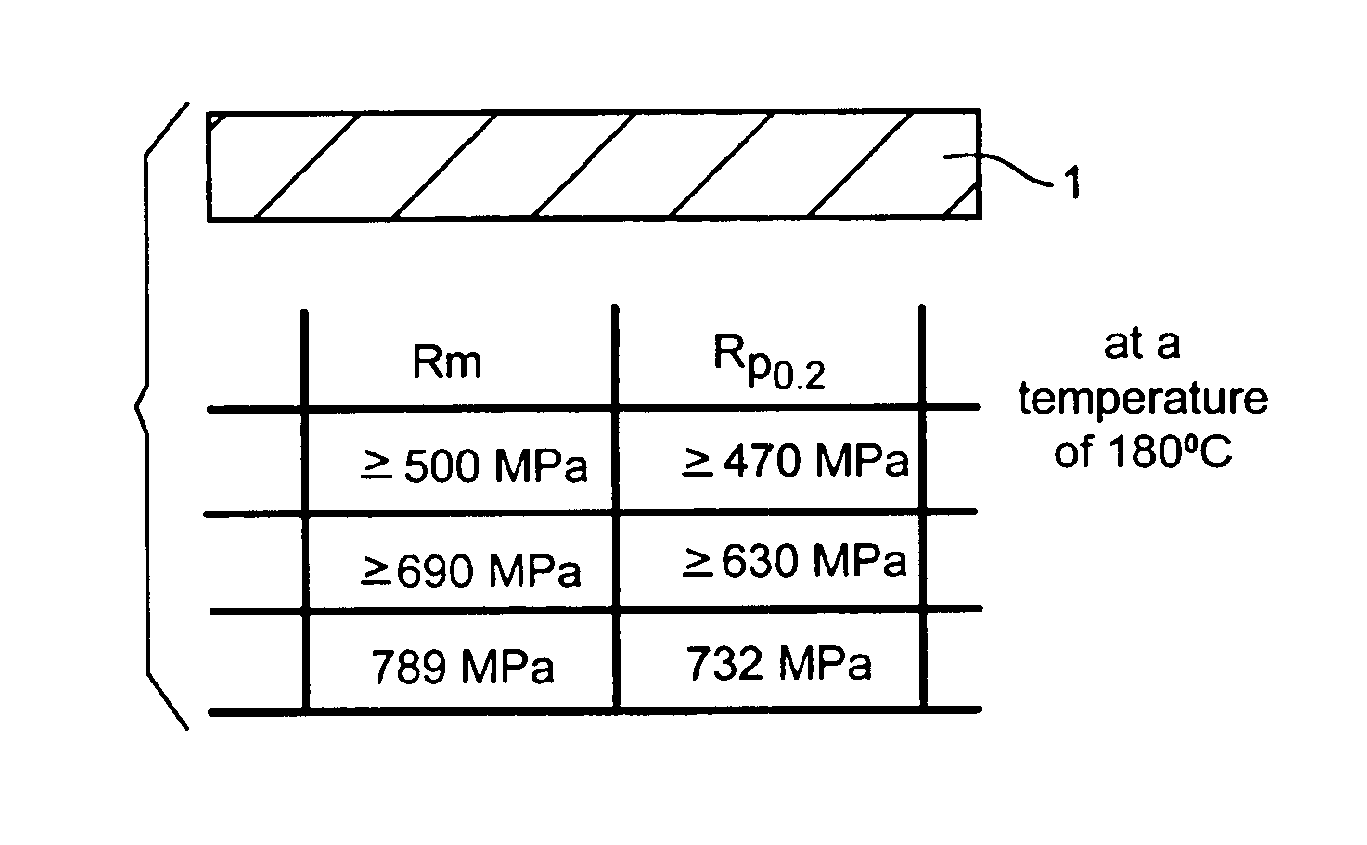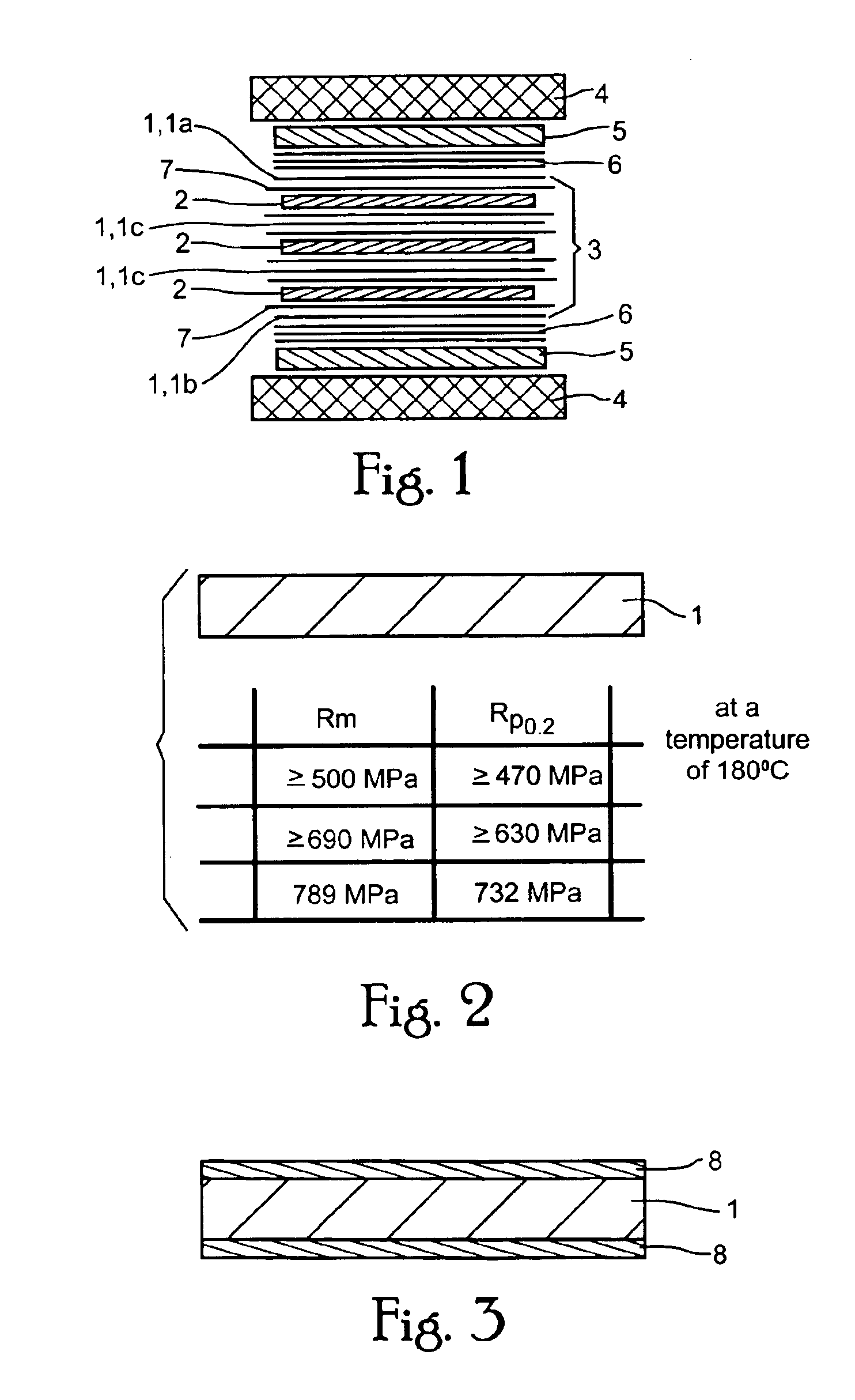Partition or method for producing a partition for a multilayer pressed packet
a multi-layer pressed packet and partitioning technology, which is applied in the direction of lamination, furnace types, electrical devices, etc., can solve the problems of unfavorable displacement/movement of the individual layers of the multi-layer, the time required to heat this high-grade steel sheet is correspondingly long, and the production of the multi-layer itself is now affected by various problems, so as to reduce processing and energy costs, the effect of saving spa
- Summary
- Abstract
- Description
- Claims
- Application Information
AI Technical Summary
Benefits of technology
Problems solved by technology
Method used
Image
Examples
Embodiment Construction
[0021]FIG. 1 shows a schematic representation of the structure of a multilayer pressed packet 3 having several partitions 1 and multilayers 2. FIG. 2 shows a partition 1 with a corresponding table indicating the desired or preferred mechanical strength values, and finally FIG. 3 shows a surface-treated partition 1. The invention is concerned with partitions 1 that are provided in the lamination of multilayer printed circuit boards-pressed packets.
[0022]In FIG. 1, a multilayer pressed packet 3 is shown in a schematic representation. As is apparent, the multilayer pressed packet 3 is arranged in a corresponding press, which is not shown in detail here, namely between the press plates 4 and the pressing tools 5 of the press. In order to enable an optimal arrangement of the multilayer pressed packet 3, here additional pressing pads 6 are provided between the outer partitions 1a and 1b of the multilayer pressed packet 3. The multilayer pressed packet 3 now consists of several multilayers...
PUM
| Property | Measurement | Unit |
|---|---|---|
| temperature | aaaaa | aaaaa |
| thickness | aaaaa | aaaaa |
| yield strength | aaaaa | aaaaa |
Abstract
Description
Claims
Application Information
 Login to View More
Login to View More - R&D
- Intellectual Property
- Life Sciences
- Materials
- Tech Scout
- Unparalleled Data Quality
- Higher Quality Content
- 60% Fewer Hallucinations
Browse by: Latest US Patents, China's latest patents, Technical Efficacy Thesaurus, Application Domain, Technology Topic, Popular Technical Reports.
© 2025 PatSnap. All rights reserved.Legal|Privacy policy|Modern Slavery Act Transparency Statement|Sitemap|About US| Contact US: help@patsnap.com


